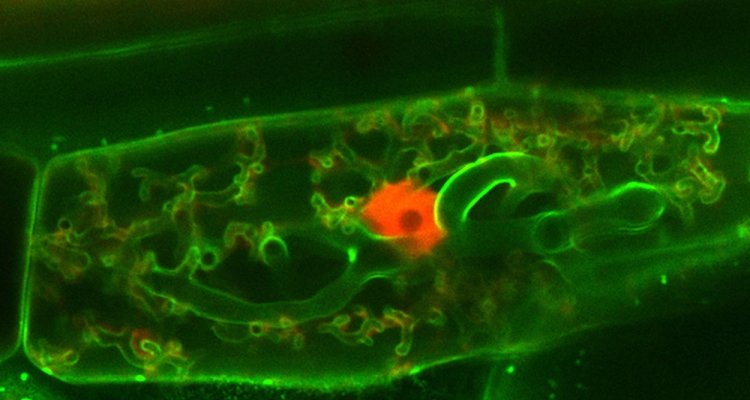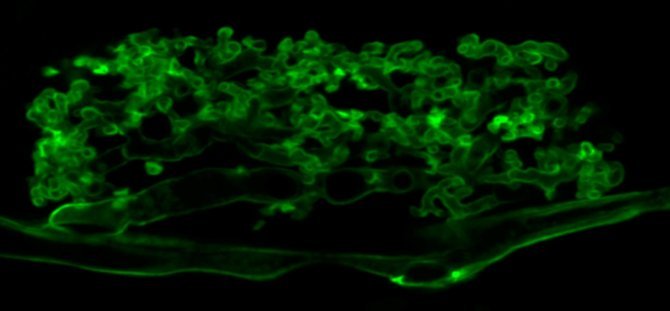
Limpens Group - Molecular development of Arbuscular Mycorrhizal symbiosis
To live in environments where nutrients are limited, plants engage in an endosymbiosis with arbuscular mycorrhizal (AM) fungi. These fungi colonize plant roots and are hosted inside root cortex cells, where highly branched hyphal structures called arbuscules are formed (Figure 1). There, the fungi deliver scarce minerals, especially phosphate and nitrogen sources, that they take up from the soil to the plant for which they get sugars and lipids in return.
The AM symbiosis is very ancient and occurs in the vast majority of all land plants, which makes it one of the agriculturally and ecologically most important endosymbioses in plants. Understanding how AM fungi are accommodated inside plant roots and how nutrient exchange is controlled is of major importance as it determines the symbiotic efficiency of the interaction. Therefore, we use molecular, genetic- and cell-biological approaches to study the molecular mechanisms by which AM fungi optimize symbiotic nutrient transfer; both from the plant and the fungal side.
